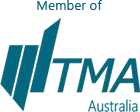Voluntary Administration (VA) is a procedure that involves appointing an external administrator to assess business viability and make recommendations for a business facing financial difficulties. The administrator can be appointed by the company’s director, or by a secured creditor that is required to be a registered liquidator with ASIC.
The role of the administrator mainly includes:
- Investigating business financials and making recommendations on required actions.
- Managing and communicating with creditors, employees, and other key stakeholders
- Developing a plan to restructure and turnaround the business to profitability
The outcome of a VA procedure depends on multiple factors including the severity of the issues, creditor’s voting, and the final recommendations by the administrator. The competing options include going into liquidation, entering a deed of company arrangement (DOCA), or returning to trading under the directors’ management.
While VA procedure has several benefits, acting as early as possible is essential to minimise the negative impact and increase the chances of success. Businesses that act in the early stages of experiencing cashflow and profitability issues, often have more options to explore and therefore a reasonable chance of a turnaround. Engaging external business expertise can help in restructuring the business and provide the best prospects to avoid liquidation.
Advantages
Provide a breathing space: Entering VA provides several advantages for a business in financial distress. Landlords, owners, and creditors are temporarily prevented from enforcing their claims against the company unless they have permission from a court or the administrator.
Additionally, creditors who hold personal guarantees can’t act under their guarantee without court permission.
Avoid insolvent trading: There are serious legal implications for directors who fail to prevent insolvent trading. These may consist of significant fines, inability to act as a director in the future, and possible jail time. They may also be liable for personal action from creditors to recover debts incurred during insolvent trading. During the VA procedure, the directors are generally protected from insolvency trading liabilities.
External expertise: The role of the administrator is to objectively assess the business issues and provide recommendations. The company’s directors and creditors will obtain independent and professional advice that allows making an informed decision on the business’s future. If liquidation is the recommended course of action, the administrator will often be the liquidator.
A chance to continue: Implementing restructuring initiatives and reducing or deferring debt, by entering into an agreement with creditors (DOCA), can result in stabilising the business and gradually returning to profitability. The administrator and creditors can see benefits in turning around the business and continuing operating, rather than going into liquidation.
Disadvantages
Incurred cost: The VA procedure cost will be carried by the business and can be relatively significant, especially for a small business already experiencing financial difficulties. Directors or creditors need to consider associated costs when deciding on entering VA.
Control: During the VA procedure, the appointed administrator will take full control of the business and the company’s directors will not be able to make or guide daily business decisions. That includes managing business proceeds and making payment decisions.
Creditors in focus: The administrator’s role is to act and make decisions based on putting the creditor’s interests always first. From that perspective, the administrator will make restructuring and turnaround recommendations on entering DOCA, going into liquidation or return of control to the company’s directors. The administrator’s decisions can go against the directors’ and shareholders’ interests, and that is important for all parties to consider.
Public Information: A company that enters VA will be published on the ASIC website which can have negative implications if the business returns to trading. In addition, the business can face difficulties in getting financing or supply in the future which can result in higher borrowing costs and cash advancements, impacting future profitability and cash flow.
Success is not guaranteed: As previously mentioned, entering VA has some benefits, however, there are no guarantees that the procedure will bring value or achieve the desired outcome. Having external expertise and developing restructuring plans doesn’t necessarily mean returning to profitability.
Going into VA, liquidation or trying to turnaround the business, is a difficult decision to make and requires a thorough assessment prior. However, a business facing financial difficulties should seek professional advice immediately, especially if it has secured creditors or an ATO debt.






